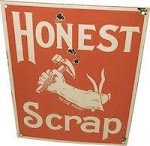Immediately thereafter, in 1790 the first settlement was established at Port Blair (then Port Cornwallis) in the present day Chatham Island by bringing hard core criminals from undivided India. However, high mortality due to malaria and frequent attacks by aborigines forced the settlement to be shifted to a new port in North Andaman during 1792. Faced with similar problems, the new settlement was also abandoned in 1796.
Tuesday, June 8, 2010
HISTORY OF ANDAMAN & NICOBAR ISLANDS
History of Andamans Revisited
The Chinese knew of these Islands over a thousand years ago and called it the ‘Yeng-t-omag’ in the First Millenium. These islands also find a place in the first map of the world drawn by Ptolemy, the renowned Roman geographer during the second century. He called it ‘Angdaman islands’ (Islands of good fortune). During the sixth century, I’T Sing, a Buddhist monk, named it ‘Lo-jen – kuo’ (Land of the Naked). Two Arab travelers during the eighth century referred to these islands as ‘Lakhabalus’ or ‘Najabulus’ (Land of the Naked). The great traveller Marco Polo called it ‘Angamanian’.
Modern history of Andaman Islands can be traced back to 1789 when the Governor General of British India commissioned a survey of these Islands by Lt. Archibald Blair, who conducted the first ever topo-cum-hydrographical survey and reported suitability for human settlement.
The present-day Chatham Island guarded by Mt. Harriet
The missionaries entered the Nicobar group of Islands in 17th century. In 1756, the Dutch colonized the Nancowry group of Islands and stayed there up to 1787. After several unsuccessful attempts to build up a colony in Nancowry, the Dutch Government ultimately handed over the Nicobar group of Islands to the British, who took possession in 1869.
The Penal Settlement
It was in 1857, after India’s First War of Independence, that a penal colony was attempted at Port Blair with an initial lot of 200 freedom fighters who, for the first time, attempted to overthrow British rule in India. The number of freedom fighters increased to 773, within three months of that. The famous “Battle of Aberdeen” between civilized men and Stone Age aborigines of Andamans was fought on 14th May, 1859 at Aberdeen.
During 1869 – 70, many ‘Wahabi Movement’ activists who rose against the British rule were deported from the Central and United Provinces of undivided India to the Andamans. One amongst them was Mohd. Sher Ali Khan (a Pathan), who assassinated Lord Mayo, the Viceroy and Governor General of India on 08 February 1872 at Hope Town Jetty (now called Panighat). Later, in the same year, Sher Ali Khan was executed in Viper Island by the British. On 13 September 1893, the British Government of India ordered the construction of a Cellular Jail to accommodate 600 prisoners.
Prior to construction of the Cellular Jail, male convicts were held in a jail on Viper Island and women convicts in South Point barracks (near the present day Hotel Sinclair).
Then occurred, the great uprising of Moplahs during 1921- ‘the Moplah Rebellion’. About 1400 Moplahs mostly from Muslim dominated districts of Ernad, Walluvanad and Calicut of Kerala were sent to Andamans with their families for rebelling against the British rule. Then, the Rampa Revolution during 1922 – 24. As a result, many Rampa revolutionaries were also sent to the Andamans.
The Japanese Rule
During the II World War, the British hastily evacuated and abandoned these Islands in the face of the advancing Japanese Forces, allowing Japanese occupation of Andaman and Nicobar Islands. The Japanese brutally ruled the territory for four years from 1942 to 1945. During this period, the Japanese took up massive fortification on these islands through construction of airfields (Port Blair, Rutland, Car Nicobar), installation of Radars and guns for air defence network, chain of foreshore concrete pill boxes, underground ammunition dumps with trolley lines connecting some of them to the Port Blair airport and elaborate underground bunkers for the troops. The remains of pill boxes, radars and anti aircraft guns are still visible at some places.
The Port Blair harbor was extensively used as a forward surveillance base for seaplanes of the advancing Japanese forces. A few months after the Japanese occupation, allied forces succeeded in blocking seaplanes threatening the islands’ population to the brink of starvation. The Japanese successfully averted the disaster through enforced intensive community of farming of tubers like tapioca and sweet potato. Extensive road network expansion was also undertaken at that time for connecting Port Blair with outlying villages and cultivating land.
On the morning of 7th October 1945, the Armada carrying 116 Indian Infantry Brigade of South East Asian Allied Land Force under the command of Brigadier A.J. Solomon surrounded Port Blair compelling about 20,000 armed Japanese force to surrender on 9th October 1945.
Eventually, with the advent of the Indian Independence on 15th August 1947, these islands were merged with the Indian main stream.
Subscribe to:
Post Comments (Atom)





































Hmmmm history fascinates me and thank for sharing the history of Andaman islands :)
ReplyDelete@Lakshmi Rajan Yeaaaah! And I've been observing all my life that this one fascinates all the people all over the world, hell of a lot. Thanks for your kind praise. Cheers! :)
ReplyDeleteThank you sir for sharing this beautiful piece of information with us.I am waiting to visit this place.I am desperate actually.I have heard so much about this.
ReplyDeleteHi Shri...I love to learn a lot about new places, it's history, culture, background..everything...and ur place is so informative thru ur pics and notes about A&N islands...
ReplyDeleteAm sure it's a beautiful place :). Hopefully I shall get to visit it someday.
@The Author Thank you, my dear young friend! And yes, you must visit these islands to have an experience of a lifetime, soon. Cheers! :-)
ReplyDelete@crystaldewdrops The use of traveling is to regulate imagination by reality, and instead of thinking how things may be, to see them as they are. You're welcome to the floating paradise on earth! Thanks very much for sharing your thoughts with us, here, dear Dew! :-)
wow traveling for free and without paying a cent!! very nice and useful blog. I love to learn about different places and cultures. I love the images, the blog is very easy to follow. Thanks for sharing.
ReplyDelete@Judy Thanks very much for your kind admiration and the follow, dear Judy! I look forward to hearing more from you quite often. Welcome aboard! Cheers! :-)
ReplyDeletethank for history.....got to know through you a lot about island.
ReplyDeleteintresting history very much amazing places of andaman &nicobar
ReplyDelete